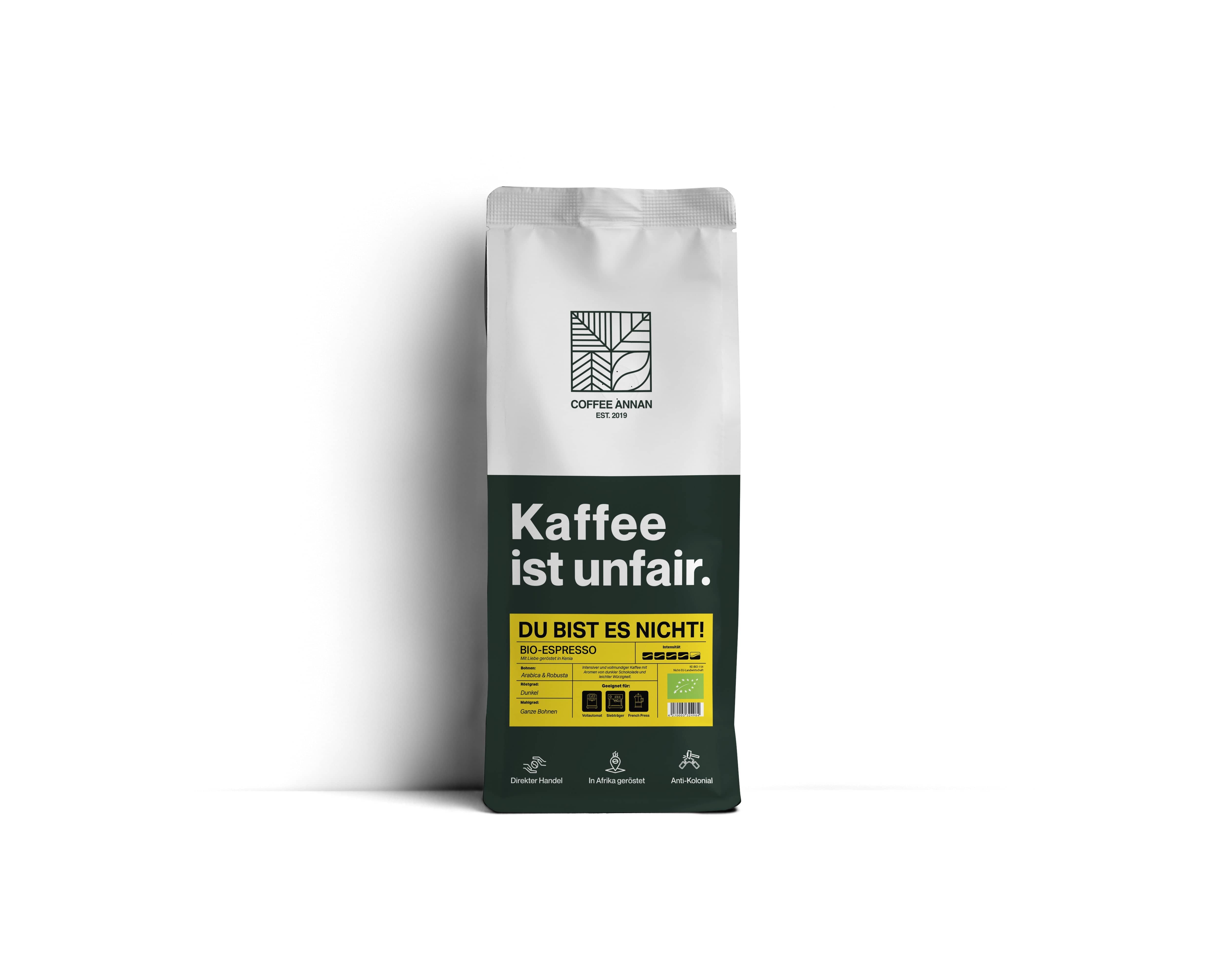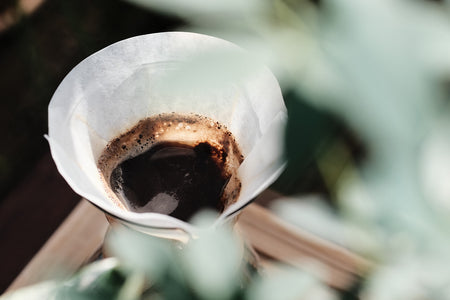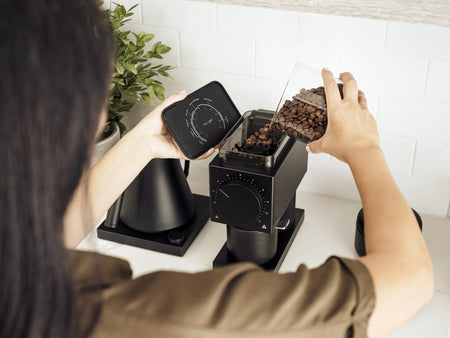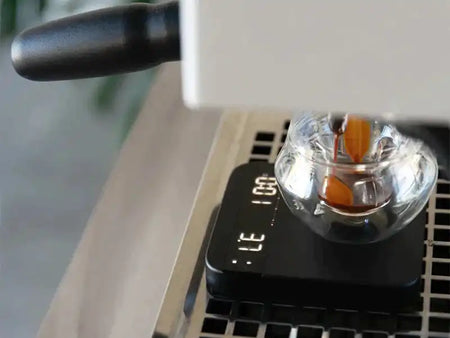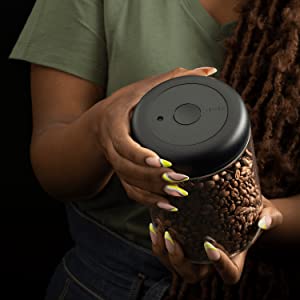Latte macchiato vs. Cappuccino: What's the Difference?
The tradition of drinking coffee with milk isn't very old; for a long time, it was drunk black and only refined with sugar in Turkey. Milk and coffee probably first encountered each other in Europe, possibly in Paris. Milk was used as a neutralizer to counteract the bitter taste and acidity caused by a lack of knowledge during the brewing process or errors in cultivation or roasting. Today, these drinks represent the Dolce Vita, the Italian way of life. But what's the difference between a latte macchiato and a cappuccino?
Cappuccino & Latte Macchiato: The differences at a glance
Cappuccino and latte macchiato differ primarily in the milk foam, the ratio of coffee to milk, and the preparation method – an overview helps with conscious enjoyment."
Learn moreHow to prepare the perfect cappuccino
A perfect cappuccino is achieved with the right ratio of espresso, milk and milk foam – we explain step by step what is important.
Learn moreLatte Macchiato made professionally: the best way to start the day
A professionally prepared latte macchiato impresses with its layering, temperature and milk foam.
Learn moreFun facts about the popular coffee specialties
Interesting facts and curious facts: These fun facts show what makes coffee specialties like cappuccino and latte macchiato so special.
Learn moreCappuccino & Latte Macchiato: The differences at a glance
The two coffee specialties are easily distinguishable visually, as cappuccino is served in a medium-sized cup and latte macchiato is served in a traditional tall glass. However, the real difference between latte macchiato and cappuccino lies in the preparation.
In a cappuccino, the espresso is first poured into a cup before the milk foam is poured over it in one go. The milk mixes slightly with the espresso, giving it its typical appearance.
For a latte macchiato, however, you first pour milk and milk foam into a glass, then pour in the espresso. The espresso sits on top of the warm milk below the foam, creating the typical triple layering in the glass. Kongo Specialty Coffee Filter Roast:
How to prepare the perfect cappuccino
To make a typical Italian cappuccino, you need about 25 to 30 ml of espresso to 50 to 60 ml of frothed milk.
Preparation:
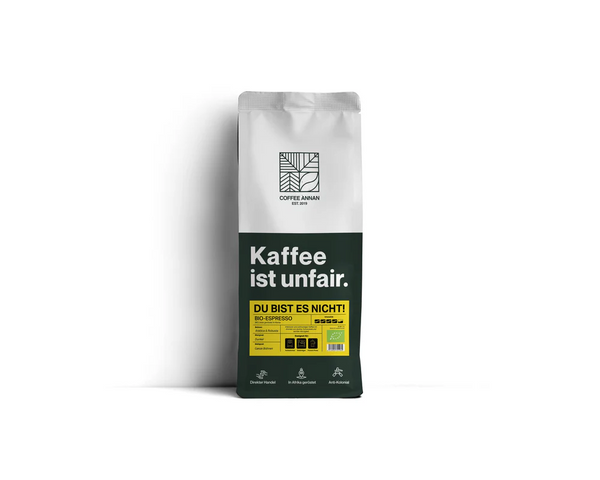
Step 1:
- Brew 30 ml of organic espresso .

Step 2:
- Now pour the cold milk into a milk jug (e.g. our Fellow Eddy Milk Pitcher ) and froth 50 to 60 ml of milk using a milk frother of your choice or your portafilter machine.

Step 3:
- Now pour the espresso into a cup (particularly stylish: Fellow Monty Milk Art Cup ) and quickly add the milk foam so that the crema of the espresso mixes with the milk.
This is what you need for the espresso
A good cappuccino is, of course, based on high-quality espresso! At Coffee Annan, we recommend our espresso beans , which are made from 100% Arabica and taste more chocolatey than fruity.
With an electric coffee grinder , the beans can be finely ground to achieve the best consistency for a portafilter.
With a portafilter you can prepare the most delicious espresso:
- Preheat the espresso machine and grind the coffee beans.
- Pour the ground coffee into the portafilter. Smooth your finger along the edge of the portafilter to distribute the coffee evenly.
- Press the coffee grounds into the portafilter with a tamper. This takes some practice until you find the right pressure.
- Rinse your espresso machine with hot water.
- Now insert the portafilter and begin the extraction. This will take approximately 26 to 32 seconds.
Of course, you can also make cappuccino with a fully automatic coffee machine, an espresso maker, or an Aeropress !
The perfect milk foam for the cappuccino
This popular hot beverage requires milk foam of a particular consistency. This can be created using the hot water nozzle of a portafilter or fully automatic coffee machine, or you can use a milk frother or a whisk.
When using the hot water nozzle, make sure the nozzle stays below the surface of the milk while heating to avoid splashing. The milk will froth until it doubles in volume.
For a cappuccino, you want a milk foam that's not too thick and doesn't form air bubbles. Whole or semi-skimmed milk is ideal for achieving the right foam consistency.
If you tap the container briefly on a table after frothing, this will help the air bubbles escape.
Many fully automatic coffee machines have a built-in milk container that froths milk at the touch of a button and pours it directly onto the coffee. It's important to always thoroughly clean the milk nozzle, hose, and container to prevent sticking.
Latte Macchiato made professionally: the best way to start the day
Translated, latte macchiato means "tainted milk" because it contains significantly more milk than espresso. Originally intended for children, this hot drink is especially popular with women, many of whom first skim the milk foam with a long spoon and then drink the espresso-milk mixture through a straw.
To make it, you need a tall glass, 150 to 200 ml of milk and 30 ml of espresso.
Preparation:
- Heat two-thirds of the milk to 60 °C.
- Now froth the remaining third until a firm milk foam forms.
- First pour the liquid milk into the glass.
- Pour the thick milk foam on top.
- Prepare 30 ml of espresso.
- Now carefully pour the espresso into the center of the milk foam and wait until the three layers of color have formed.
It is important that the espresso is freshly brewed so that it is hotter than the milk, otherwise the three layers will not work.
The difference between latte macchiato and cappuccino is the amount of milk, as both drinks contain the same amount of espresso.
For the perfect espresso, it's best to use a darker coffee like our organic espresso to ensure you're getting sustainably grown coffee that's fairly traded and comes directly from the country of origin.
The latte macchiato can also be made with a fully automatic coffee machine, portafilter, Aeropress or espresso maker.
Making the perfect milk foam
Milk foam, especially for a latte macchiato, is a real challenge for many, as the firm consistency isn't easy to achieve. Here are a few tips for achieving perfect milk foam:
- The fat content of milk plays a major role! Ideally, it's between 3.3 and 4 percent.
- It's also important that the milk is fresh and at the right temperature. In a fully automatic coffee machine, it works best at refrigerator temperature, but in a milk frother, it works best at room temperature.
- When frothing, the milk must not boil, but needs a temperature between 60 and 70 degrees.
- When preparing with the nozzle of the portafilter or a coffee machine, it is important to only fill the container two-thirds full with milk so that the nozzle can penetrate deep enough.
The integrated milk jug in a fully automatic coffee machine is certainly practical! You can get a latte macchiato with just the right amount of milk at the touch of a button. However, you also have to pay attention to proper cleaning.
Calories also play a role!
There's another important difference between a latte macchiato and a cappuccino: the calorie content! A cappuccino has about 50 calories, while a latte macchiato has about 130! This is due to the milk. A latte macchiato uses significantly more milk, and this milk ideally needs a higher fat content for frothing. So, if you're trying to watch your weight, a cappuccino is a better option.
Fun facts about the popular coffee specialties
A latte macchiato is milk with coffee, compared to a cappuccino, which is coffee with milk. Both drinks contain the same amount of espresso, so the caffeine content is also the same. However, in a cappuccino, the espresso is distributed between just under 60 ml of milk, while in a latte macchiato, it's about 150 to 200 ml.
Germans usually drink their first coffee right at home to really wake up, while more than a quarter of people from our neighboring countries Austria and Switzerland only have it at work. The Swiss prefer espresso, but Germans generally prefer an Americano or café crème.
In Italy, caffè always means espresso. Italians almost never drink coffee from paper cups. If they're in a hurry, they'll drink it standing up in a café or bar, where it's even cheaper. Visitors are always offered coffee, but cappuccino and latte macchiato are only available at breakfast; ordering one of these drinks after lunch is a major faux pas. Generally speaking, drinking coffee takes priority over all other activities in Italy: If you're currently enjoying your coffee, you can let others wait.
Incidentally, the cappuccino got its name because it is reminiscent of the color of the robe worn by the Capuchin monks.
The coffee code: You are what you drink!
How do you prefer your coffee? This can provide interesting insights into your preferences and personality. Psychologists have come to some interesting conclusions from their observations:
- Black coffee indicates a dynamic, very success-oriented, resourceful and active person.
- People who prefer latte are considered compassionate, optimistic and emotional.
- Coffee with milk and sugar means you're open-minded and enjoy comfort. Hecticness and stress aren't for these people.
- Espresso drinkers are loud, sexy, cool, hectic, daring and passionate coffee lovers.
- Latte macchiato drinkers are communicative, playful, friendly, nice and have a sense of the pleasant side of life.
- Cappuccino is for those who enjoy cuddling. Romantic, sensitive, sociable, and in need of harmony are the attributes of these coffee drinkers.
Conclusion
The difference between a cappuccino and a latte macchiato lies not only in the lifestyle, but above all in the amount of milk used. The espresso base remains the same. But without high-quality coffee, these specialties would just be hot milk!
With sustainably produced coffee from Coffee Annan, you'll bring authentic flavor and the finest barista quality to your cup. The Fellow Eddy Milk Pitcher creates the perfect milk foam, allowing you to froth milk precisely and evenly. Serve your cappuccino or latte macchiato in style with the Fellow Monty Milk Art Cups , specially designed for latte art.
Become part of the Roasting at Origin movement and give your coffee producers the appreciation they deserve.



